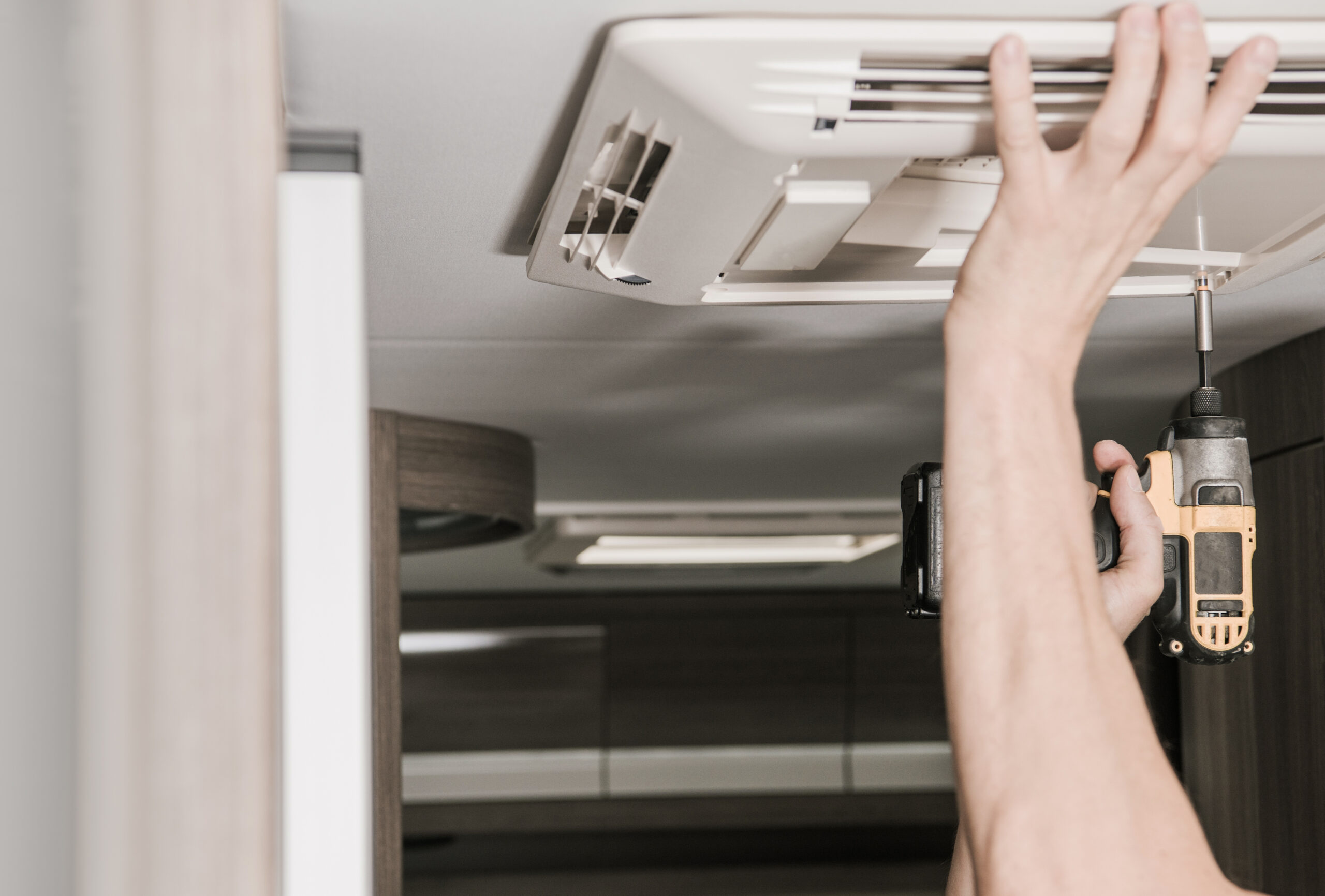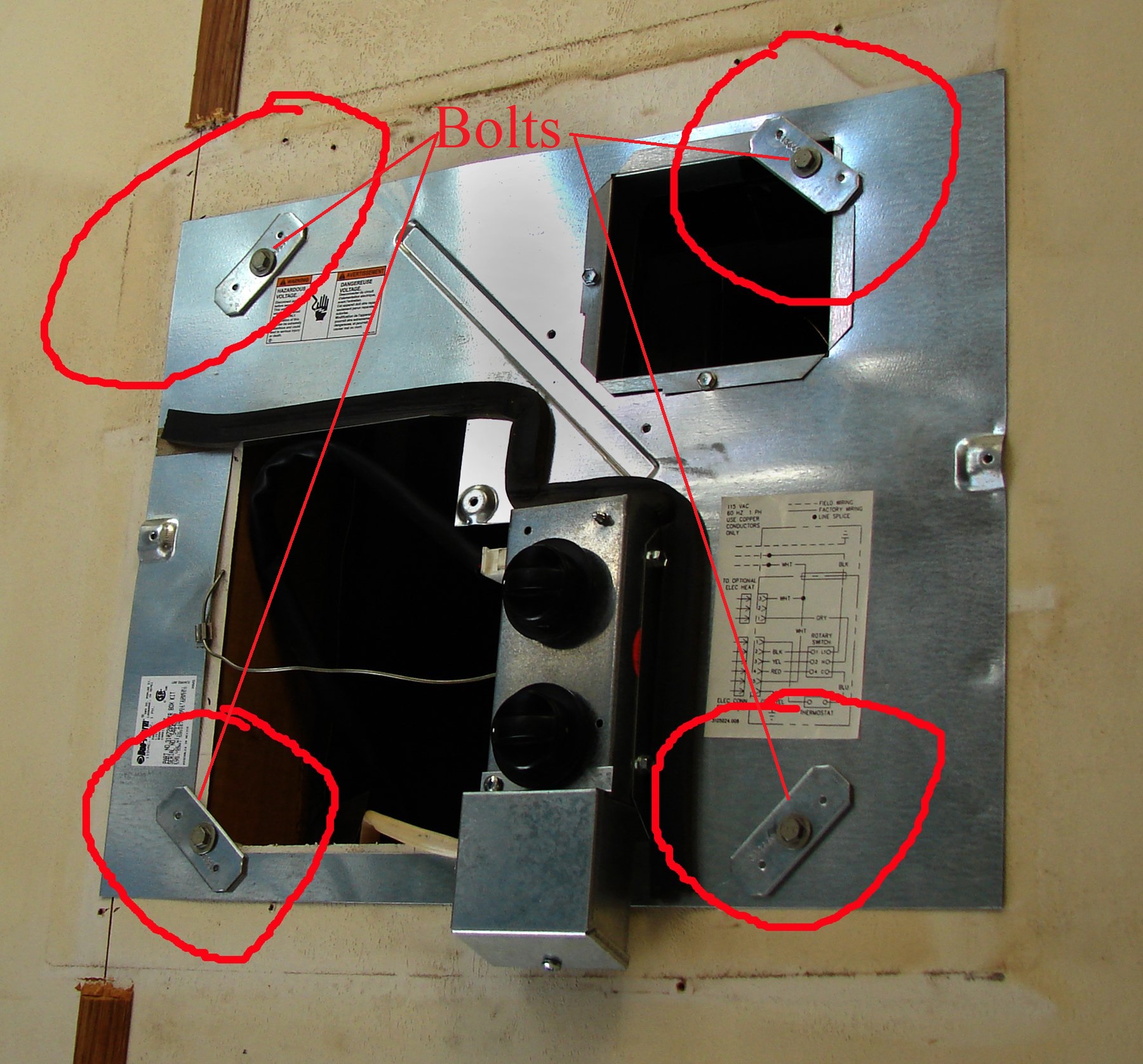
Why Is My RV AC Leaking Water?
“Why is my RV AC leaking water?” is one of many questions that might arise over the course of owning an RV. There are several potential scenarios and answers to this question.
The first thing to determine is when and where the water leak occurs. Does it occur when it is raining while the roof-mounted AC is not running? Does it occur when the AC is running, regardless of rainfall? Does it only occur during periods of hot, humid weather when the AC is running?
Where does the leak occur? Does it drip from the ceiling where the AC ceiling assembly is located, or does it come from the ducted vents (if your RV has ducted vents)?
Possible reasons your RV AC is leaking water
Rainwater
If water is only leaking into your RV when it is raining, then the most likely cause is the AC roof gasket.
The roof gasket is a self-adhesive foam gasket that sits between the AC and the roof. Four bolts between the roof mounted portion of the AC and the ceiling assembly compress the gasket to prevent rainwater from entering your RV.
The first thing to try to resolve the leak is to remove the plastic cover of the ceiling assembly and locate the four bolts (see the photo below for the typical location). Using the correct size socket, tighten the bolts until they are snug.

Oftentimes, tightening the bolts will add enough extra compression to reseal the gasket and stop the leak. If the bolts are already snug, the problem may lie in the gasket itself, and it will need replacing. Here is a video that demonstrates how to replace the gasket:
Drain pan overflowing
The components of the roof portion of your RV AC are mounted to a base called a drain pan. The drain pan’s job is to catch the condensation dripping from the evaporator coil that is created when warm air is cooled. The water collects in the drain pan and then runs out through a drain hole onto the roof of your RV. This is why you notice water running off your RV roof when the AC is operating.
If the drain hole becomes plugged, debris collects in the drain pan, keeping the water from reaching the drain pan; then the water, needing somewhere to go, can possibly find its way into the RV. Cracked and failing caulking where components are mounted to the drain pan or a crack in the drain pan itself could also contribute to water leaking into the RV, but this is fairly rare.
While you have the shroud removed from the roof portion of the AC, you will also want to clean the evaporator coils, as dirty coils can also contribute to the problem.
Condensation
As noted above, condensation forms when warm air is cooled. If you are camping in a very hot and humid location (Florida in the summer, for example), you are likely to have condensation form on almost any cool surface in the AC or ducting system.
Unfortunately, not a lot can be done in these conditions. Some RVers have success running the AC on slower fan speeds to reduce icing on the evaporator and reducing condensation in the ducts.
Hopefully, this short tutorial helps you determine why your RV AC is leaking water and what you can do to fix it. Make sure you keep track of all your RV maintenance and repairs with an online tool such as RV LIFE Maintenance from RV LIFE. Not only can you keep all of your documents in one place, but you’ll also receive timely reminders when maintenance is due to help you avoid costly repairs and potentially serious accidents.
Related articles:



